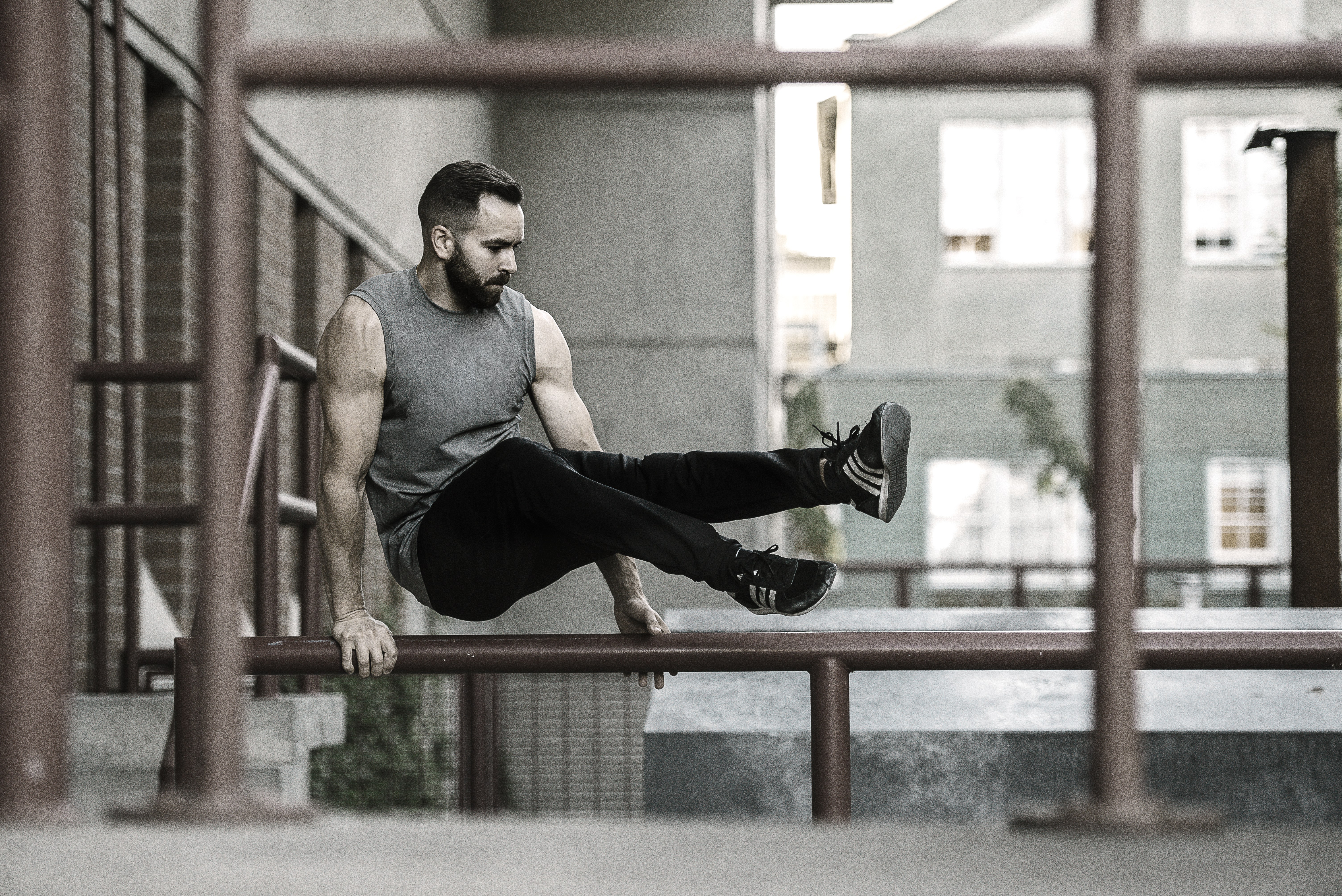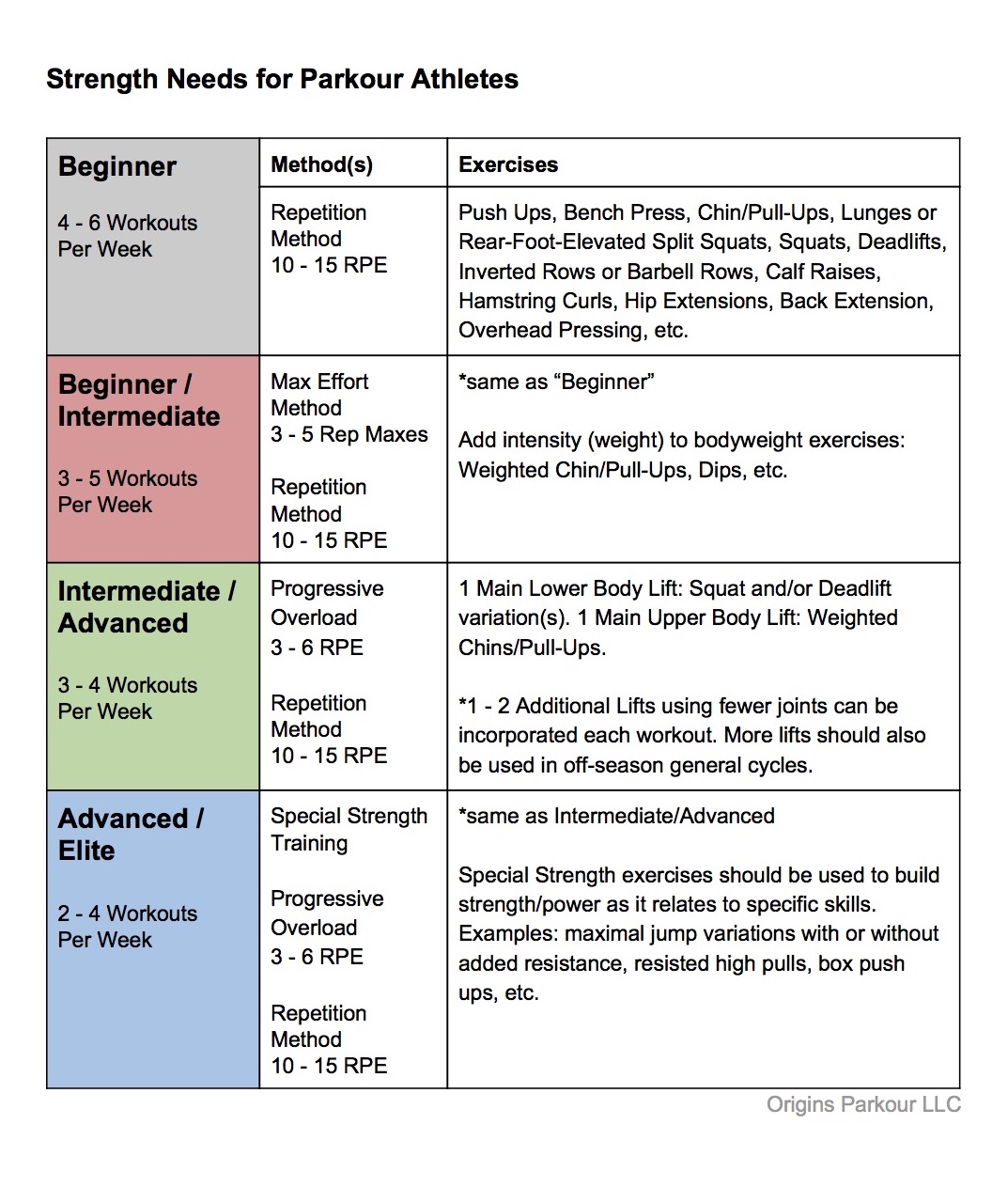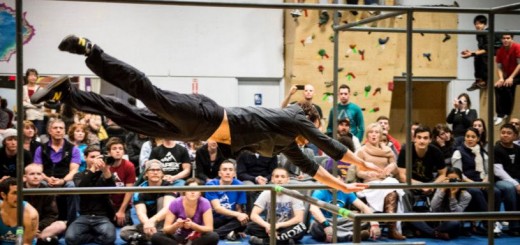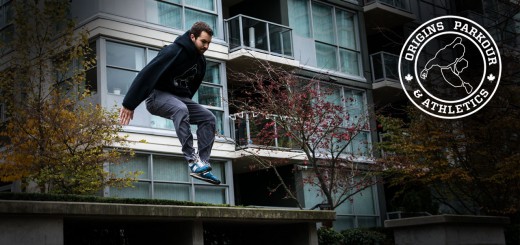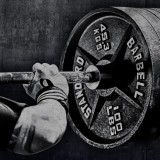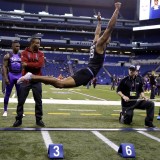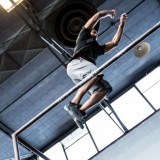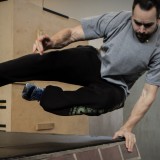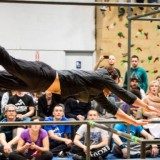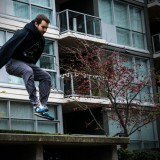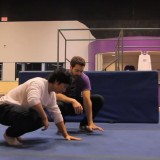Lifting & Parkour
I’m a big picture kind of guy. I like the details, but ultimately if you can’t relate the small things back to the big thing you’ve lost me. Case in point: Weight training for parkour. Why the heck is anyone doing it? And if you’re doing it how much are you doing it? And how exactly is doing it that much going to make you better at Parkour? And why exactly are you using one exercise over another?
Don’t know exactly how much you should be doing, and how or why it’s going to be optimal for you???
Alright first let’s start off with where you’re at. How strong are you? Ultimately how strong you are is going to determine how much stronger you can get. More importantly, how good are you at parkour?
NOTE: >> Not for Lifters << The following is not based on lifting standards. An athlete does not have to be elite at moving a barbell to have elite strength relative to the movements in their sport.
Beginner
- Unable to demonstrate proper reps of Push-Ups, Chin/Pull-Ups, or Barbell Lifts
- Unable to demonstrate proper technique in Jumping, Landing, Climbing, and Vaulting
Beginner / Intermediate
- Can do proper reps of Push-Ups, Chin/Pull-Ups, and Barbell Lifts
- Can demonstrate proper technique in Jumping, Landing, Climbing and Vaulting
Intermediate / Advanced
- Can do proper reps of Weighted Chin/Pull-Ups, and Dips
- Can Squat Near 1.5x Body Weight, or Deadlift near 2x Body Weight
- Has performed a finite amount of Jumps, Landings, Climbs and Vaults with proper technique
Advanced / Elite
- Can Chin/Pull-Up Half of their bodyweight
- Can Squat 1.5-2x Body Weight, or Deadlift 2-2.5x Body Weight
- Demonstrates high outputs in Sprinting, Jumping, Dynamic Climbing, and Vaulting
Elite athletes are determined by their sporting outputs, not weight room outputs.
Not everyone will fall into all of these categories perfectly, some may be much stronger at parkour than they are at lifting weights, or the other way around. If you are the former it is likely due to some degree of overspecialization. If this is the case it’s important to identify where you are weak, and begin working on building a better foundation. Building your weak areas will be done most efficiently by using a method relative to where you are weak. For example if your jump is advanced, but your squat is at a beginner level, you would benefit from using beginner strength methods to build up a variety of lower body weaknesses. This might sound demeaning, but if done correctly you should see gains quickly.
The following table outlines the appropriate methods and exercises corresponding to level of ability.
The strength training needs for a beginner to advanced/elite parkour athlete have important key differences. Beginners must use a variety of exercises to develop general coordination and strength, as well as muscular hypertrophy. The beginner can and should use a multitude of exercises to achieve good general physical preparedness. An Elite athlete will make fewer gains in strength and coordination, as they already possess beyond the required strength and coordination for elite level parkour. In this case, strength must be developed in seasonal phases, and only a select few exercises should be used outside of rehabilitation/recovery methods. Moreover, the higher level athlete should learn special exercises and drills to improve parkour skills, whereas the beginner athlete must first become generally stronger and coordinated before they can execute special exercises with correct technique.
Most importantly, an athlete whose power output is so great cannot handle as many repetitions of the same output. So a big jumper can only do a maximal effort jump so many times before they literally trash their nervous system, whereas a beginner can do a full effort jump almost as many times as requested with little difference in output. For this same reason an advanced/elite athlete should perform less volume of strength work than a beginner.
References:
(1) Francis, Charlie. Weights for Speed, DVD: http://www.charliefrancis.com
(2) Zatsiorsky, Vladimir & William Kraemer. (2006) Science and Practice of Strength Training – 2nd Edition: Human Kinetics

